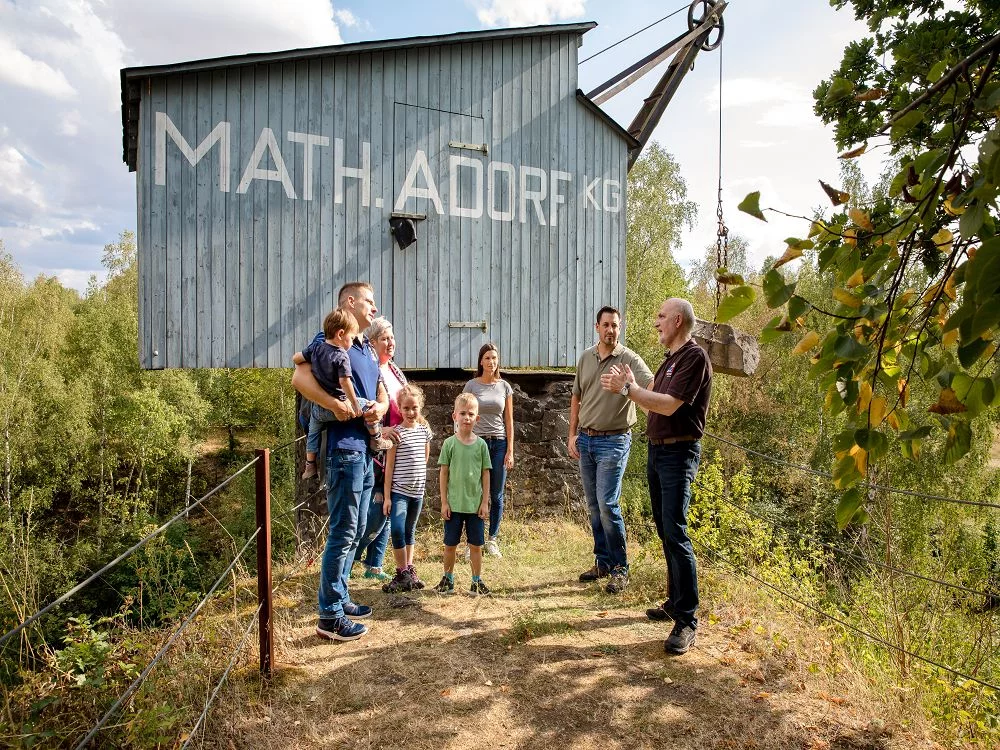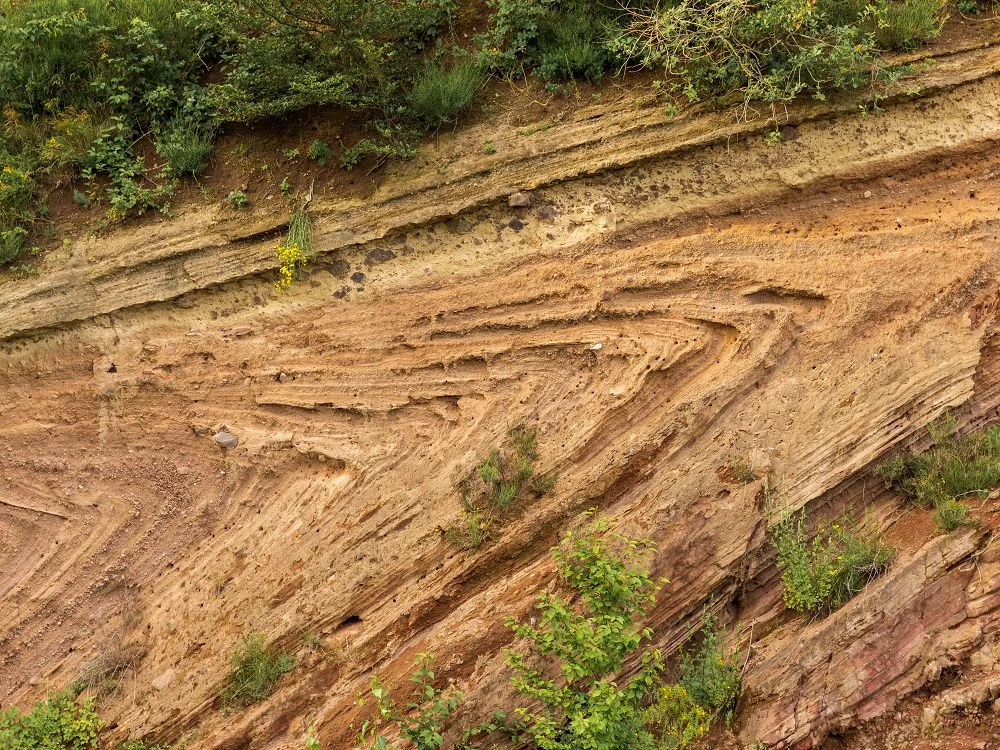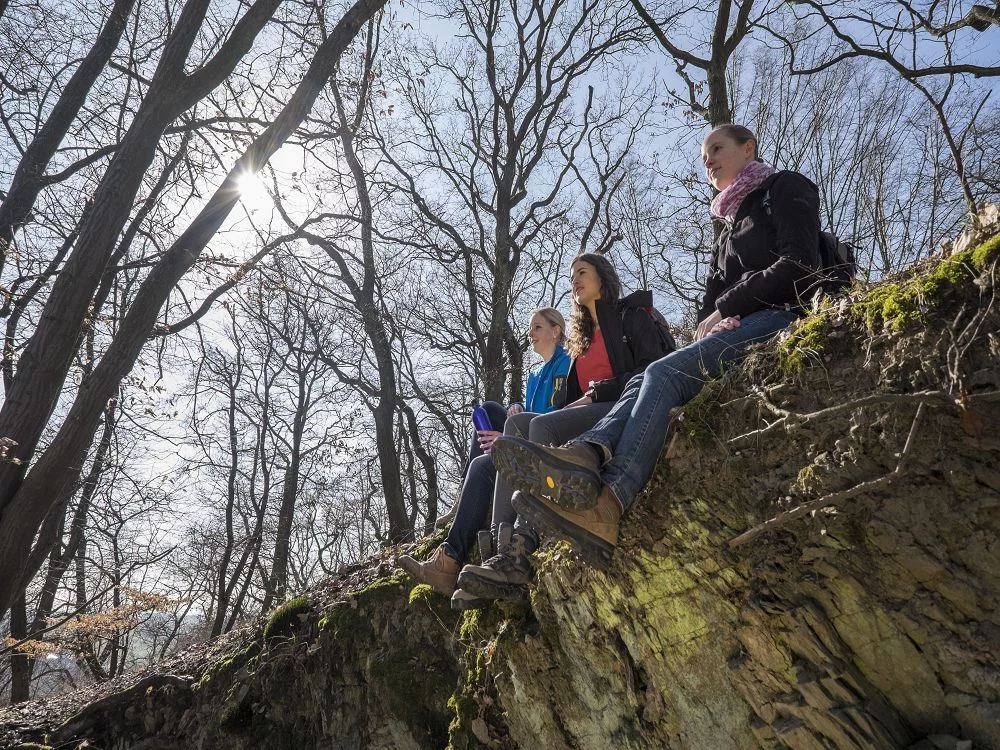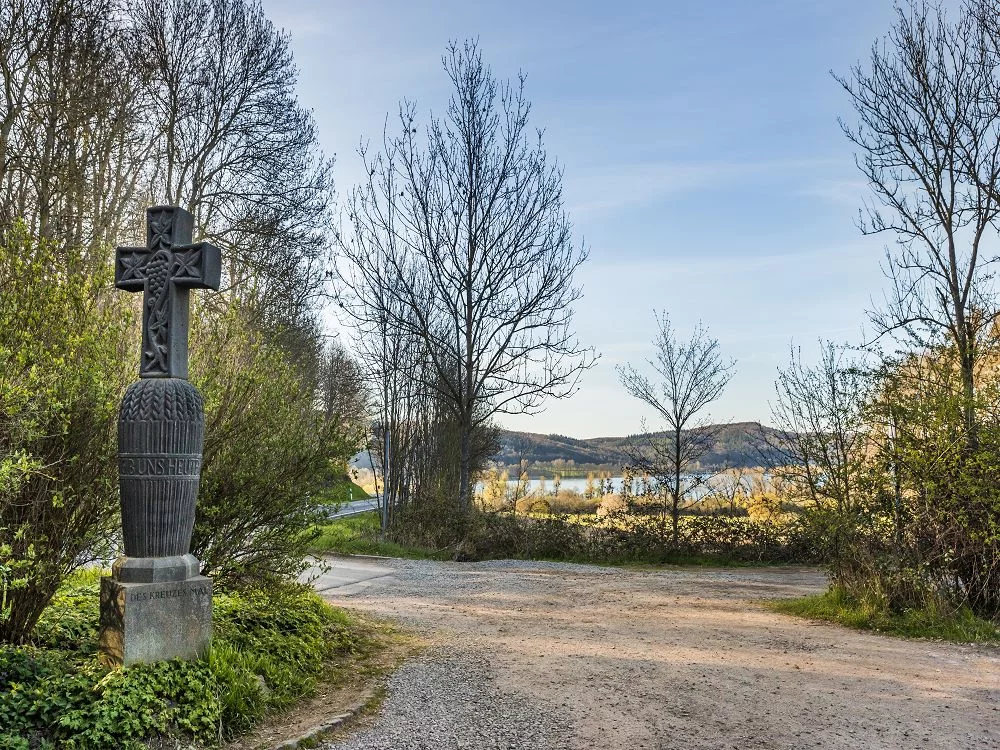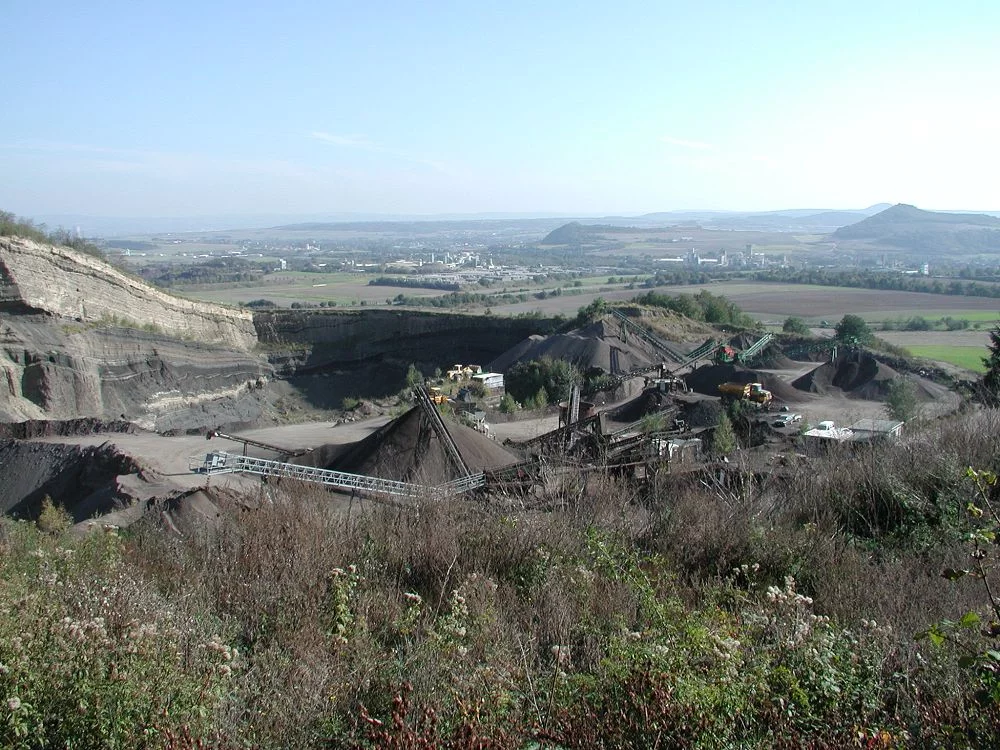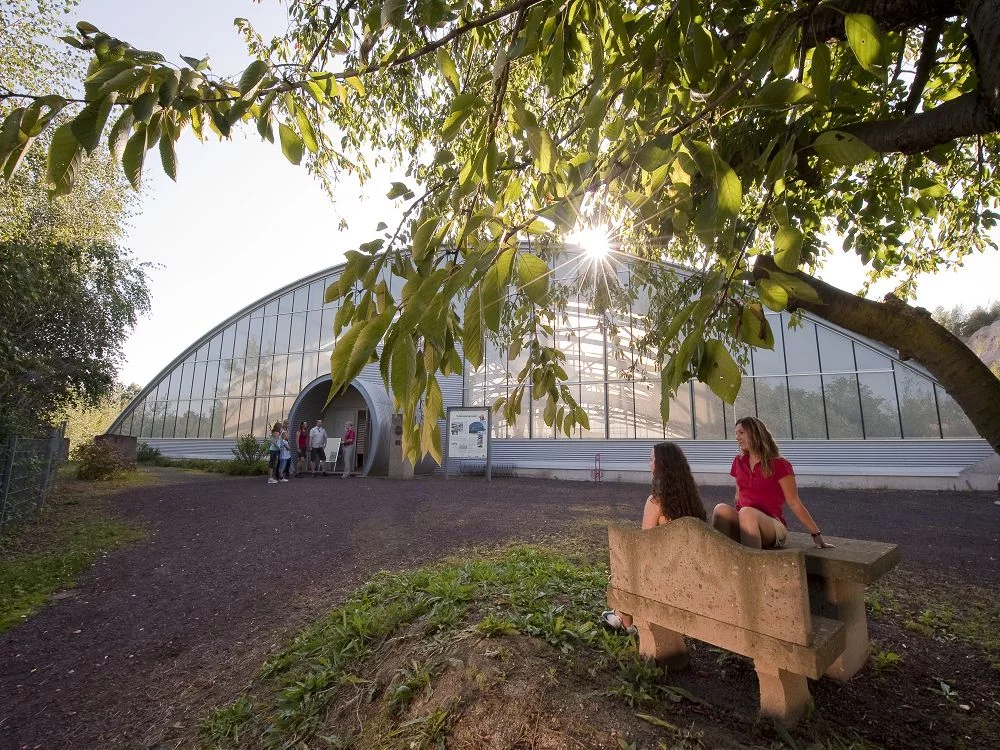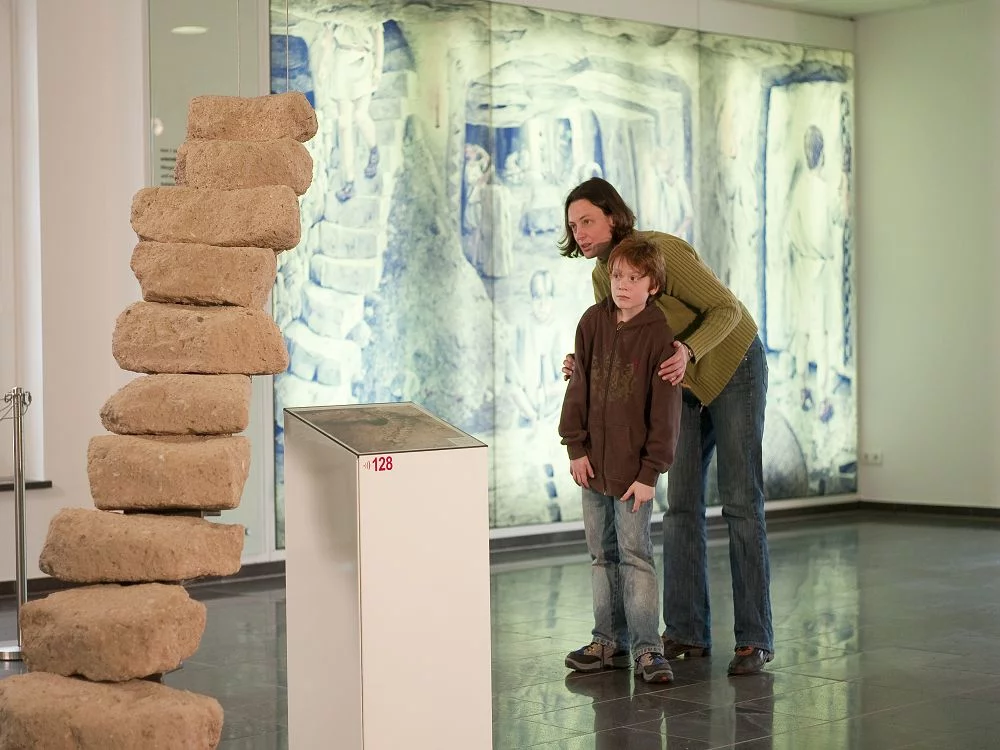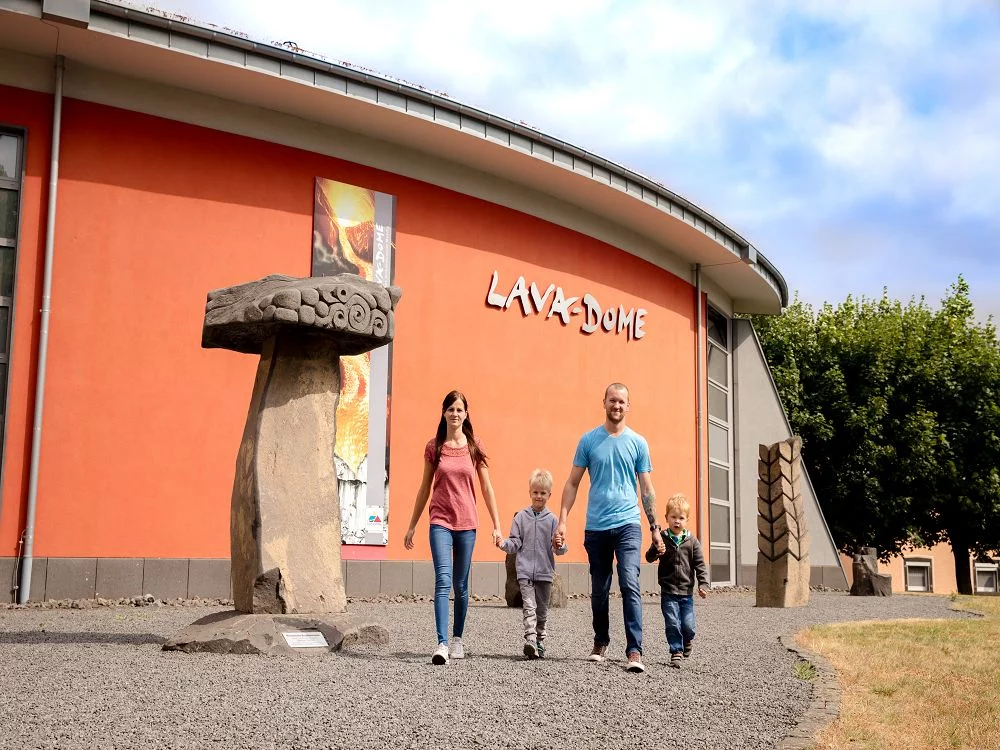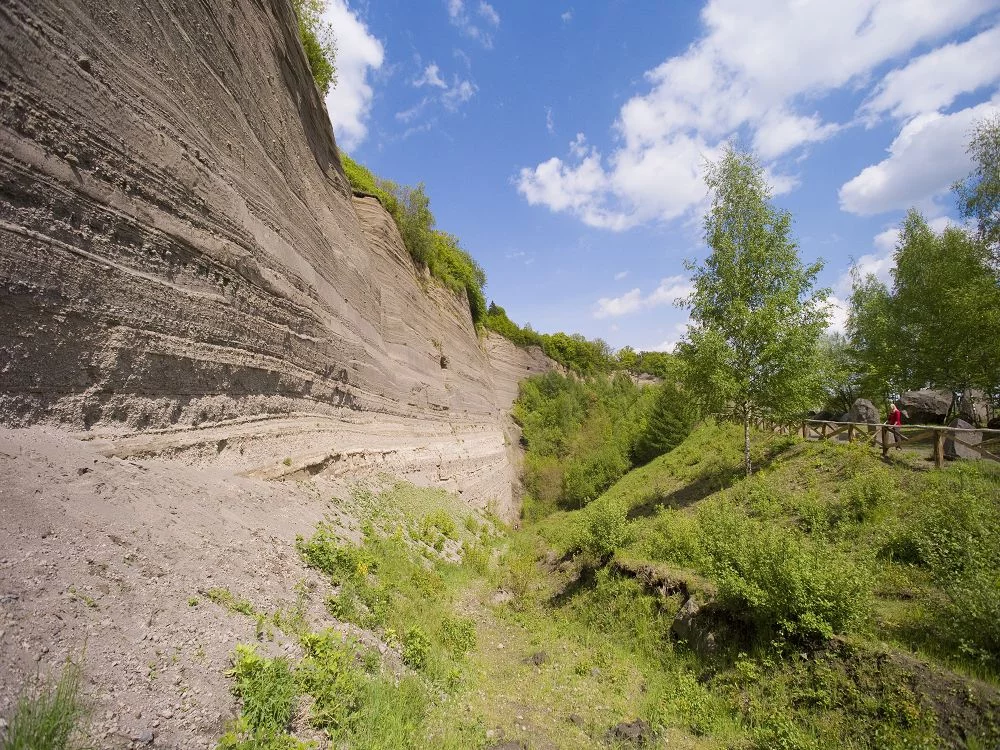The first time around 32 million years ago: Rising magma makes its way upwards through layers of shale, limestone and sandstone and tears blocks of rock with tremendous force. The fragments are hurled out of the vent with great force and mix with the ejected ash. To this day, the lighter-colored blocks of rock amidst the darker ash deposits are still clearly visible on the edges of the quarry. Further magma from the earth's interior penetrates upwards into these still loose deposits and forms a pear-shaped basalt dome.
The second eruption, around 24 million years ago, was much calmer: Magma rises again and pushes itself under the solidified basalt of the first eruption. The Arensberg used to be much higher. While millions of years ate away at the old ash deposits from the first eruption, it was people in the 19th century who took away the mountain's summit. The ruins of a medieval church had to make way for the basalt quarry. The small chapel on the edge of the path is a reminder of this today. Gradually, people penetrated deeper and deeper into the mountain and followed the vent into the depths. Today, the old quarry offers an impressive view into the interior of an extinct volcano.

